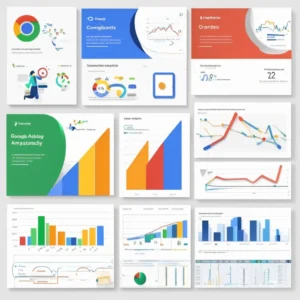Introduction to Drones
Drones, also known as unmanned aerial vehicles (UAVs), have revolutionized various industries and hobbies due to their versatility, ease of use, and advanced technological capabilities. Originally developed for military purposes, drones have since found applications in areas such as photography, videography, agriculture, mapping, surveillance, and even package delivery.
History and Evolution
The concept of drones dates back to the early 20th century, with the first known use being during World War I for target practice. However, it wasn’t until the 21st century that drones began to see significant advancements in technology, miniaturization, and affordability. Companies like DJI, Parrot, and others have played pivotal roles in democratizing drone technology by making it accessible to consumers and businesses alike.
Types of Drones
Drones come in various shapes, sizes, and functionalities, catering to different needs and preferences:
- Multirotor Drones: These are the most common consumer drones, featuring multiple rotors (usually four or more) to achieve stability and maneuverability. They are popular for recreational use, aerial photography, and short-range inspections.
- Fixed-Wing Drones: Resembling traditional airplanes, fixed-wing drones are designed for longer flights and are more efficient in terms of battery usage. They are commonly used in aerial mapping, agriculture, and surveying.
- Hybrid VTOL Drones: Combining the vertical take-off and landing capabilities of multirotor drones with the efficiency of fixed-wing aircraft, these drones offer versatility for various applications.
- Nano Drones: Small and lightweight, nano drones are typically used for indoor flying or as toys due to their compact size and limited range.
Drone Components and Technology
1. Frame and Body
The frame of a drone provides structural support and houses all the internal components. Frames can be made from various materials such as carbon fiber, plastic, or aluminum, with each material offering different levels of durability and weight.
2. Motors and Propellers
Motors and propellers are essential for flight control. Multirotor drones typically use brushless motors for efficiency and reliability. Propellers come in different sizes and shapes, affecting flight characteristics such as speed, stability, and payload capacity.
3. Flight Controller
The flight controller is the brain of the drone, responsible for interpreting commands from the pilot or autopilot system and adjusting the drone’s motors accordingly to maintain stability and control.
4. Battery and Power Management
Drones rely on rechargeable lithium-ion batteries for power. Battery technology continues to advance, with improvements in energy density and flight time being key areas of development.
5. Sensors and Navigation
Modern drones are equipped with various sensors such as GPS, altimeters, gyroscopes, and accelerometers. These sensors provide essential data for navigation, stabilization, and autonomous flight capabilities.
6. Cameras and Gimbals
One of the most popular features of consumer drones is their ability to capture high-quality aerial photographs and videos. Drones are equipped with cameras ranging from basic HD cameras to professional-grade 4K and beyond. Gimbals are used to stabilize the camera during flight, ensuring smooth and steady footage.
Applications of Drones
Drones have diverse applications across several industries and fields:
1. Photography and Videography
Consumer drones equipped with high-resolution cameras have transformed aerial photography and videography, allowing hobbyists and professionals to capture stunning aerial perspectives.
2. Agriculture
Drones are increasingly used in precision agriculture for tasks such as crop monitoring, spraying pesticides, and assessing soil conditions. They can cover large areas quickly and provide farmers with valuable data to optimize crop yields and reduce costs.
3. Construction and Infrastructure Inspection
Drones are employed for inspecting infrastructure such as bridges, buildings, and pipelines. They can access hard-to-reach areas more safely and cost-effectively than traditional methods, reducing the need for scaffolding or cranes.
4. Search and Rescue
In emergency situations, drones equipped with thermal cameras and GPS can aid search and rescue operations by locating missing persons or assessing disaster areas where it may be unsafe for rescuers to enter.
5. Mapping and Surveying
Drones are used extensively for creating detailed maps and 3D models of terrain, construction sites, and archaeological sites. They provide accurate data quickly and efficiently, saving time and resources compared to traditional surveying methods.
6. Environmental Monitoring
Drones play a crucial role in environmental conservation efforts by monitoring wildlife, forests, and water bodies. They can track animal populations, detect illegal logging activities, and assess the impact of climate change on ecosystems.
Regulations and Safety
As drone technology has advanced, so too have regulations governing their use. Governments worldwide have implemented rules and guidelines to ensure safe and responsible drone operations. Common regulations include:
- Registration: Some countries require drones to be registered with aviation authorities.
- Flight Restrictions: Drones may be prohibited from flying near airports, over crowds, or in certain airspace.
- Licensing and Training: Commercial drone operators often need to obtain licenses and undergo training to ensure they can operate drones safely and legally.
- Privacy Concerns: Drones equipped with cameras raise privacy concerns, leading to regulations regarding where and how footage can be captured and used.
Adhering to these regulations is crucial to avoid fines, legal issues, or compromising public safety.
Choosing the Right Drone
When choosing a drone, several factors should be considered to ensure it meets your needs and expectations:
1. Purpose
Identify why you want a drone. Are you interested in aerial photography, recreational flying, or commercial applications like mapping or inspections? Different drones are designed for different purposes, with varying capabilities and features.
2. Skill Level
Consider your experience with drones. Beginners may prefer drones with features like GPS stabilization, automated flight modes, and obstacle avoidance systems to facilitate learning and prevent crashes.
3. Flight Time and Battery Life
Flight time refers to how long a drone can stay airborne on a single battery charge. Battery life is influenced by factors such as drone size, weight, and payload. For longer flights, consider drones with extended battery life or the option to swap batteries easily.
4. Camera Quality
If photography or videography is a priority, pay attention to the camera specifications. Look for drones with cameras capable of capturing high-resolution photos (e.g., 12MP or higher) and videos (e.g., 4K resolution).
5. Range and Connectivity
Check the drone’s control range, which dictates how far it can fly from the pilot. Drones equipped with WiFi or radio frequency (RF) connectivity offer different ranges and signal strengths. Consider whether you need long-range capabilities or plan to fly in areas with potential signal interference.
6. Portability and Size
If you travel frequently or plan to transport the drone frequently, consider its size and portability. Compact drones are easier to carry and store but may have trade-offs in terms of flight stability or camera quality.
7. Budget
Drones vary widely in price, from affordable models for beginners to high-end drones with advanced features for professionals. Set a budget and prioritize features that are most important to you within that price range.
Shopping for Drones
When shopping for a drone, there are several avenues to consider:
1. Online Retailers
Platforms like Amazon, DJI’s official store, and specialized drone retailers offer a wide selection of drones with customer reviews, detailed specifications, and competitive pricing. Online shopping provides convenience and access to a broader range of products.
2. Physical Stores
Electronics stores, hobby shops, and department stores may carry drones for consumers to see in person and receive advice from sales staff. This allows you to physically inspect the drone before making a purchase decision.
3. Secondhand Market
Consider buying a used or refurbished drone to save money. Websites like eBay or dedicated drone forums often have listings from individuals selling their drones in good condition. Ensure you verify the condition and history of the drone before buying.
4. Direct from Manufacturers
Buying directly from drone manufacturers like DJI, Parrot, or Autel Robotics provides access to the latest models, warranties, and customer support. Manufacturers often offer bundles that include additional accessories like spare batteries or carrying cases.
Maintenance and Care
To prolong the life of your drone and ensure safe operation, regular maintenance and proper care are essential:
- Check and Calibrate: Before each flight, inspect the drone for any damage or wear. Calibrate the compass, gyroscopes, and IMU (Inertial Measurement Unit) as per the manufacturer’s instructions.
- Battery Care: Follow the manufacturer’s guidelines for charging and storing batteries. Avoid overcharging or letting batteries fully discharge, as this can reduce their lifespan.
- Propeller Maintenance: Inspect propellers for cracks or damage. Replace damaged propellers promptly to prevent flight instability or accidents.
- Software Updates: Keep the drone’s firmware and companion app up to date to access new features, performance improvements, and security patches.
- Storage and Transportation: Store the drone in a cool, dry place away from direct sunlight and moisture. Use a protective case or bag during transportation to prevent damage.
- Environmental Considerations: Be mindful of weather conditions when flying. High winds, rain, or extreme temperatures can affect drone performance and battery life.








